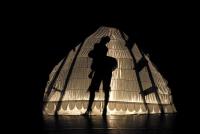 South Africa´s theatre gains international recognition for its performance arts productions due to applying diverse aesthetics and the search of new stage approaches by many different artists. In addition, regularly scheduled national and international dance, performance art and theater festivals are organized like Invecting the City in Cape Town, Dance Umbrella in Johannesburg, and National Arts Festival in Grahams Town etc.
South Africa´s theatre gains international recognition for its performance arts productions due to applying diverse aesthetics and the search of new stage approaches by many different artists. In addition, regularly scheduled national and international dance, performance art and theater festivals are organized like Invecting the City in Cape Town, Dance Umbrella in Johannesburg, and National Arts Festival in Grahams Town etc.
07.03.2012 | by Grit Köppen
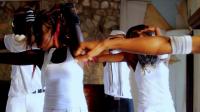 The most interesting things happen often completely unexpected. On a trip to Nairobi, being busy with the Solo and Duo Festival of Dance Forum Nairobi I came along the dynamics of inspiring artists in the GoDown Art Centre located in the industrial area of town. There I had the coincidental chance to meet the dancer Irene Karanja in a daily rehearsal program for a dance show choreographed by Fernando Anuang´a. Her artist name is short: Renée.
The most interesting things happen often completely unexpected. On a trip to Nairobi, being busy with the Solo and Duo Festival of Dance Forum Nairobi I came along the dynamics of inspiring artists in the GoDown Art Centre located in the industrial area of town. There I had the coincidental chance to meet the dancer Irene Karanja in a daily rehearsal program for a dance show choreographed by Fernando Anuang´a. Her artist name is short: Renée.
28.12.2011 | by Grit Köppen
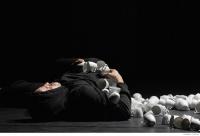 The stage and the auditorium are darkened. Suddenly a noise of clinking glasses in the audience is to hear. The stage light is slowly moved in, it remains dimmed considerably. The room is bare, dark and corresponds to a black box theatre. One can see a mountain of white cups on the right half of the stage.
The stage and the auditorium are darkened. Suddenly a noise of clinking glasses in the audience is to hear. The stage light is slowly moved in, it remains dimmed considerably. The room is bare, dark and corresponds to a black box theatre. One can see a mountain of white cups on the right half of the stage.
20.10.2011 | by Grit Köppen
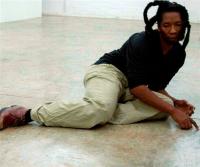 "I think there are so many misconceptions about African cultures. Besides, I use the ideas of used objects for rituals, but the material is different. Sometimes I abstract additionally the movements of such rituals. Anyway, I feel the need to alienate ritual elements; they mainly serve as an inspiration for me".
"I think there are so many misconceptions about African cultures. Besides, I use the ideas of used objects for rituals, but the material is different. Sometimes I abstract additionally the movements of such rituals. Anyway, I feel the need to alienate ritual elements; they mainly serve as an inspiration for me".
11.10.2011 | by Grit Köppen
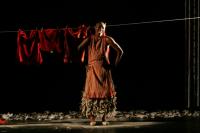 Multiple award-winning dancer, choreographer, teacher and development activist Mamela Nyamza, the 2011 Standard Bank Young Artist Award Winner for Dance, started using dance to translate the world around her as a child growing up in Gugulethu in the 1980s.
Multiple award-winning dancer, choreographer, teacher and development activist Mamela Nyamza, the 2011 Standard Bank Young Artist Award Winner for Dance, started using dance to translate the world around her as a child growing up in Gugulethu in the 1980s.
28.09.2011 | by SouthAfrica Reporter
 The solo violin playing of Isaac Molelekoa is so impressive, melancholic and space pervading that the viewers are dispelled. Extremely slow a dancer becomes visible, who stands in a narrow cone of light in the center of the stage. It is a quiet, strong and contrastive picture - this disturbing music of the violinist, that encourages you to move either internally or externally, and the continued structural integrity of the dancer Maqoma on stage.
The solo violin playing of Isaac Molelekoa is so impressive, melancholic and space pervading that the viewers are dispelled. Extremely slow a dancer becomes visible, who stands in a narrow cone of light in the center of the stage. It is a quiet, strong and contrastive picture - this disturbing music of the violinist, that encourages you to move either internally or externally, and the continued structural integrity of the dancer Maqoma on stage.
22.09.2011 | by Grit Köppen
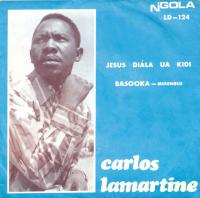 It’s 1943 and Benguela is thriving. As the famous railway heads inland, the town readies itself for a make-over: there is a modern development plan afoot. Progress is the watchword. In one of its streets, an important event is about to occur: Dona Ludovina (a singer of some style, they say), the wife of Sebastião José da Costa, an employee at the Post Office and a former journalist, is about to give birth to a child she will call Carlos Lamartine. Benguela waits, with open arms, to welcome a great son, one who will be a major figure in Angolan music and the author of timeless melodies.
It’s 1943 and Benguela is thriving. As the famous railway heads inland, the town readies itself for a make-over: there is a modern development plan afoot. Progress is the watchword. In one of its streets, an important event is about to occur: Dona Ludovina (a singer of some style, they say), the wife of Sebastião José da Costa, an employee at the Post Office and a former journalist, is about to give birth to a child she will call Carlos Lamartine. Benguela waits, with open arms, to welcome a great son, one who will be a major figure in Angolan music and the author of timeless melodies.
18.02.2011 | by Mário Rui Silva
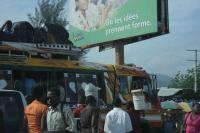 “Haïti plus fort avec le jazz”, “Haiti stronger with jazz” is the theme of International Jazz Festival of Port-au-Prince that will take place in this city between the 19th and the 26th of February.
“Haïti plus fort avec le jazz”, “Haiti stronger with jazz” is the theme of International Jazz Festival of Port-au-Prince that will take place in this city between the 19th and the 26th of February.
17.02.2011 | by Sílvia Norte
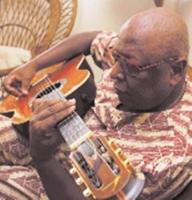 The saucepan lids turned like records on an imaginary pick-up. If you closed your eyes, you could hear the sounds reverberating everywhere. Then came the sessions when other rhythms were played - mornas and coladeras on the guitar of a cousin who “sort of lived in the house.” The gramophones and the radios had also been sort of living there for a long time. But that was at the start. Aftyer that there was going to be the Clube Marítimo Africano, the final year parties, the focus on a big new star and then recognition as a major figure in Angolan music: Filipe Zau.
The saucepan lids turned like records on an imaginary pick-up. If you closed your eyes, you could hear the sounds reverberating everywhere. Then came the sessions when other rhythms were played - mornas and coladeras on the guitar of a cousin who “sort of lived in the house.” The gramophones and the radios had also been sort of living there for a long time. But that was at the start. Aftyer that there was going to be the Clube Marítimo Africano, the final year parties, the focus on a big new star and then recognition as a major figure in Angolan music: Filipe Zau.
16.02.2011 | by Mário Rui Silva
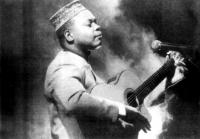 He sings the sounds of the earth, though it was the Beatles who woke everyone up to the range of melodies that are to be found in the musical scale. Filipe Mukenga’s career has been acknowledged both at home and abroad and is part of the generation that saw an explosion of music in Angola during the 60’s and 70’s.
He sings the sounds of the earth, though it was the Beatles who woke everyone up to the range of melodies that are to be found in the musical scale. Filipe Mukenga’s career has been acknowledged both at home and abroad and is part of the generation that saw an explosion of music in Angola during the 60’s and 70’s.
07.12.2010 | by Mário Rui Silva
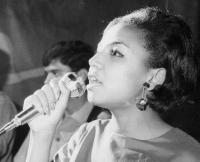 She lives now in France, where she founded the association for Angolan artists resident there. Her companion is a Croatian musician who also “does a touch of painting.” Whenever there’s a chance, she’s up on stage. And there’s no better end than her own words: “every time I sing, I live the moment with the same amazement as the butterfly on the only day of its life, perched on the coloured petal of a flower.”
She lives now in France, where she founded the association for Angolan artists resident there. Her companion is a Croatian musician who also “does a touch of painting.” Whenever there’s a chance, she’s up on stage. And there’s no better end than her own words: “every time I sing, I live the moment with the same amazement as the butterfly on the only day of its life, perched on the coloured petal of a flower.”
27.10.2010 | by Mário Rui Silva
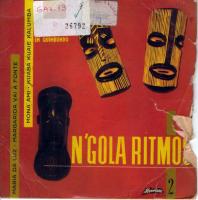 Musseque residents would likely have said, “my suffering, yes, but ours as well.”
Music, in late colonial Angola took private grief and by performing it publicly made it collective. The sound, and perhaps even the process, was attractive to whites as well and in an ironic twist on the lusotropical narrative, by the early 1970s, whites made their way to the musseques in sizeable numbers to hear Ngola Ritmos and other popular bands play.
Musseque residents would likely have said, “my suffering, yes, but ours as well.”
Music, in late colonial Angola took private grief and by performing it publicly made it collective. The sound, and perhaps even the process, was attractive to whites as well and in an ironic twist on the lusotropical narrative, by the early 1970s, whites made their way to the musseques in sizeable numbers to hear Ngola Ritmos and other popular bands play.
01.09.2010 | by Marissa Moorman
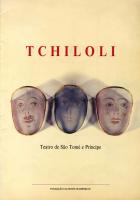 Tchiloli is a story of blood and justice that the local people have made their own. They have turned it into a way to raise their voices against opression but also to retie their links with their African ancestors. Behind the colourful spectacle there is a hidden invocation to their ancestors, in references to a cult that was forbidden under colonial rule. Defeat comes, but there emerges an identity in territory that the first players could take for their own as a means of survival.
Tchiloli is a story of blood and justice that the local people have made their own. They have turned it into a way to raise their voices against opression but also to retie their links with their African ancestors. Behind the colourful spectacle there is a hidden invocation to their ancestors, in references to a cult that was forbidden under colonial rule. Defeat comes, but there emerges an identity in territory that the first players could take for their own as a means of survival.
12.08.2010 | by Agnela Barros
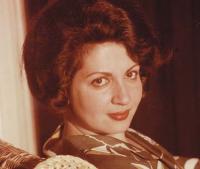 Real recognition for her talent came in 1966, when she wins the performance award at the Luanda song contest, with the famous song “Maria Provocação” by Ana Maria de Mascarenhas and Adelino Tavares da Silva. She still has vivid memories: “That night, in September 1966, in the Aviz cinema, there was only typically Angolan music to be heard. It was an overwhelming success and the sadness was also overwhelming when they announced that “Maria Provocação” could not be entered, because the organisers wouldn’t authorise the typical Angolan instruments of Ngola Ritmos to be part of the orchestra.
Real recognition for her talent came in 1966, when she wins the performance award at the Luanda song contest, with the famous song “Maria Provocação” by Ana Maria de Mascarenhas and Adelino Tavares da Silva. She still has vivid memories: “That night, in September 1966, in the Aviz cinema, there was only typically Angolan music to be heard. It was an overwhelming success and the sadness was also overwhelming when they announced that “Maria Provocação” could not be entered, because the organisers wouldn’t authorise the typical Angolan instruments of Ngola Ritmos to be part of the orchestra.
18.07.2010 | by Mário Rui Silva
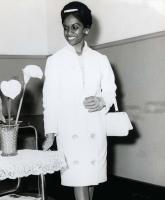 Her compositions were first known only in a small inner circle, but with the Luanda Song Festival, her work became known to a wider public. In the 60s she had formed a duo with the Portuguese journalist Adelino Tavares da Silva, who had just arrived in Angola. They composed four or five songs together and then registered in the Portuguese Writers’ Association, with Adelino as songwriter and Ana Maria as composer. It can be said that the duo revolutionised the Song Festival, when Maria Provocação was performed by Sara Chaves and Mulata é a Noite by Concha de Mascarenhas. They were both accompanied by Ngola Ritmos, the Angolan rhythm group.
Her compositions were first known only in a small inner circle, but with the Luanda Song Festival, her work became known to a wider public. In the 60s she had formed a duo with the Portuguese journalist Adelino Tavares da Silva, who had just arrived in Angola. They composed four or five songs together and then registered in the Portuguese Writers’ Association, with Adelino as songwriter and Ana Maria as composer. It can be said that the duo revolutionised the Song Festival, when Maria Provocação was performed by Sara Chaves and Mulata é a Noite by Concha de Mascarenhas. They were both accompanied by Ngola Ritmos, the Angolan rhythm group.
08.07.2010 | by Mário Rui Silva
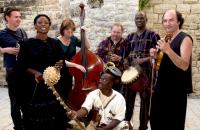 Congo sends their hottest stars, but Mali is the African country with more representatives in FMM Sines 2010: Tinariwen, Cheick Tidiane Seck feat. Mamani Keita and Founé Diarra Trio (along with Breton Jacky Molard Quartet).
Congo sends their hottest stars, but Mali is the African country with more representatives in FMM Sines 2010: Tinariwen, Cheick Tidiane Seck feat. Mamani Keita and Founé Diarra Trio (along with Breton Jacky Molard Quartet).
08.07.2010 | by Câmara Municipal de Sines
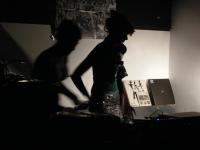 At the horizon of imagined cities as “transcultural megacities”, music tends to gain agency in the promotion of senses of place and belonging in, and to the city. We attempt to show the ways in which the processes and values associated with the internationalization of culture – which, more generally, are taking place within the context of the “new political economy and its culture”, may be explored under the light of some musical manifestations taking place in the city of Lisbon.
At the horizon of imagined cities as “transcultural megacities”, music tends to gain agency in the promotion of senses of place and belonging in, and to the city. We attempt to show the ways in which the processes and values associated with the internationalization of culture – which, more generally, are taking place within the context of the “new political economy and its culture”, may be explored under the light of some musical manifestations taking place in the city of Lisbon.
15.06.2010 | by Jorge de La Barre
 Kepha Oiro is a contemporary dancer and choreographer from Nairobi – Kenya. He's the artistic director of a new contemporary performing group: Tuchangamke, which conducts research into movement fusion in ethnic African communities, based at the Kenya National Theatre, Nairobi, and is the artistic director of the Dance Marathon initiative. This encounter with Nadine Siegert took place in Cologne (Germany) during an artist residency until March 2010.
Kepha Oiro is a contemporary dancer and choreographer from Nairobi – Kenya. He's the artistic director of a new contemporary performing group: Tuchangamke, which conducts research into movement fusion in ethnic African communities, based at the Kenya National Theatre, Nairobi, and is the artistic director of the Dance Marathon initiative. This encounter with Nadine Siegert took place in Cologne (Germany) during an artist residency until March 2010.
14.06.2010 | by Nadine Siegert
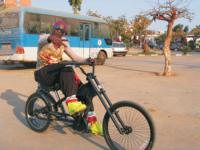 Kuduro sprang up Luanda's musseques (shanty towns) and spread rapidly through the Kandongueiros (street vendors or hawkers). New music appears on a daily basis, feeding Luanda's vocabulary with new expressions, new beats and new moves. This frenetic creation of urban languages plays an important role in today's Luanda, especially among the younger city dwellers.
Kuduro sprang up Luanda's musseques (shanty towns) and spread rapidly through the Kandongueiros (street vendors or hawkers). New music appears on a daily basis, feeding Luanda's vocabulary with new expressions, new beats and new moves. This frenetic creation of urban languages plays an important role in today's Luanda, especially among the younger city dwellers.
11.06.2010 | by Francisca Bagulho
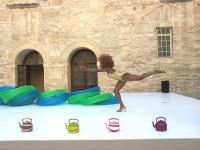 On the one hand I try to understand how African dance and as African considered corporalities are used as an aesthetic medium in common European cultural practices. How does European discourse create which images of African dance and performances? On the other hand and crucially, I focus on the African side of the coin: how do African dancers and choreographers (re)act and which are their individual choices in the scope of various challenges and do European discourse have any significance on African dancers’ and choreographers’ decisions?
On the one hand I try to understand how African dance and as African considered corporalities are used as an aesthetic medium in common European cultural practices. How does European discourse create which images of African dance and performances? On the other hand and crucially, I focus on the African side of the coin: how do African dancers and choreographers (re)act and which are their individual choices in the scope of various challenges and do European discourse have any significance on African dancers’ and choreographers’ decisions?
16.05.2010 | by Nadine Siegert
 South Africa´s theatre gains international recognition for its performance arts productions due to applying diverse aesthetics and the search of new stage approaches by many different artists. In addition, regularly scheduled national and international dance, performance art and theater festivals are organized like Invecting the City in Cape Town, Dance Umbrella in Johannesburg, and National Arts Festival in Grahams Town etc.
South Africa´s theatre gains international recognition for its performance arts productions due to applying diverse aesthetics and the search of new stage approaches by many different artists. In addition, regularly scheduled national and international dance, performance art and theater festivals are organized like Invecting the City in Cape Town, Dance Umbrella in Johannesburg, and National Arts Festival in Grahams Town etc.  The most interesting things happen often completely unexpected. On a trip to Nairobi, being busy with the Solo and Duo Festival of Dance Forum Nairobi I came along the dynamics of inspiring artists in the GoDown Art Centre located in the industrial area of town. There I had the coincidental chance to meet the dancer Irene Karanja in a daily rehearsal program for a dance show choreographed by Fernando Anuang´a. Her artist name is short: Renée.
The most interesting things happen often completely unexpected. On a trip to Nairobi, being busy with the Solo and Duo Festival of Dance Forum Nairobi I came along the dynamics of inspiring artists in the GoDown Art Centre located in the industrial area of town. There I had the coincidental chance to meet the dancer Irene Karanja in a daily rehearsal program for a dance show choreographed by Fernando Anuang´a. Her artist name is short: Renée.  The stage and the auditorium are darkened. Suddenly a noise of clinking glasses in the audience is to hear. The stage light is slowly moved in, it remains dimmed considerably. The room is bare, dark and corresponds to a black box theatre. One can see a mountain of white cups on the right half of the stage.
The stage and the auditorium are darkened. Suddenly a noise of clinking glasses in the audience is to hear. The stage light is slowly moved in, it remains dimmed considerably. The room is bare, dark and corresponds to a black box theatre. One can see a mountain of white cups on the right half of the stage.  "I think there are so many misconceptions about African cultures. Besides, I use the ideas of used objects for rituals, but the material is different. Sometimes I abstract additionally the movements of such rituals. Anyway, I feel the need to alienate ritual elements; they mainly serve as an inspiration for me".
"I think there are so many misconceptions about African cultures. Besides, I use the ideas of used objects for rituals, but the material is different. Sometimes I abstract additionally the movements of such rituals. Anyway, I feel the need to alienate ritual elements; they mainly serve as an inspiration for me".  Multiple award-winning dancer, choreographer, teacher and development activist Mamela Nyamza, the 2011 Standard Bank Young Artist Award Winner for Dance, started using dance to translate the world around her as a child growing up in Gugulethu in the 1980s.
Multiple award-winning dancer, choreographer, teacher and development activist Mamela Nyamza, the 2011 Standard Bank Young Artist Award Winner for Dance, started using dance to translate the world around her as a child growing up in Gugulethu in the 1980s.  The solo violin playing of Isaac Molelekoa is so impressive, melancholic and space pervading that the viewers are dispelled. Extremely slow a dancer becomes visible, who stands in a narrow cone of light in the center of the stage. It is a quiet, strong and contrastive picture - this disturbing music of the violinist, that encourages you to move either internally or externally, and the continued structural integrity of the dancer Maqoma on stage.
The solo violin playing of Isaac Molelekoa is so impressive, melancholic and space pervading that the viewers are dispelled. Extremely slow a dancer becomes visible, who stands in a narrow cone of light in the center of the stage. It is a quiet, strong and contrastive picture - this disturbing music of the violinist, that encourages you to move either internally or externally, and the continued structural integrity of the dancer Maqoma on stage.  It’s 1943 and Benguela is thriving. As the famous railway heads inland, the town readies itself for a make-over: there is a modern development plan afoot. Progress is the watchword. In one of its streets, an important event is about to occur: Dona Ludovina (a singer of some style, they say), the wife of Sebastião José da Costa, an employee at the Post Office and a former journalist, is about to give birth to a child she will call Carlos Lamartine. Benguela waits, with open arms, to welcome a great son, one who will be a major figure in Angolan music and the author of timeless melodies.
It’s 1943 and Benguela is thriving. As the famous railway heads inland, the town readies itself for a make-over: there is a modern development plan afoot. Progress is the watchword. In one of its streets, an important event is about to occur: Dona Ludovina (a singer of some style, they say), the wife of Sebastião José da Costa, an employee at the Post Office and a former journalist, is about to give birth to a child she will call Carlos Lamartine. Benguela waits, with open arms, to welcome a great son, one who will be a major figure in Angolan music and the author of timeless melodies.  “Haïti plus fort avec le jazz”, “Haiti stronger with jazz” is the theme of International Jazz Festival of Port-au-Prince that will take place in this city between the 19th and the 26th of February.
“Haïti plus fort avec le jazz”, “Haiti stronger with jazz” is the theme of International Jazz Festival of Port-au-Prince that will take place in this city between the 19th and the 26th of February.  The saucepan lids turned like records on an imaginary pick-up. If you closed your eyes, you could hear the sounds reverberating everywhere. Then came the sessions when other rhythms were played - mornas and coladeras on the guitar of a cousin who “sort of lived in the house.” The gramophones and the radios had also been sort of living there for a long time. But that was at the start. Aftyer that there was going to be the Clube Marítimo Africano, the final year parties, the focus on a big new star and then recognition as a major figure in Angolan music: Filipe Zau.
The saucepan lids turned like records on an imaginary pick-up. If you closed your eyes, you could hear the sounds reverberating everywhere. Then came the sessions when other rhythms were played - mornas and coladeras on the guitar of a cousin who “sort of lived in the house.” The gramophones and the radios had also been sort of living there for a long time. But that was at the start. Aftyer that there was going to be the Clube Marítimo Africano, the final year parties, the focus on a big new star and then recognition as a major figure in Angolan music: Filipe Zau.  He sings the sounds of the earth, though it was the Beatles who woke everyone up to the range of melodies that are to be found in the musical scale. Filipe Mukenga’s career has been acknowledged both at home and abroad and is part of the generation that saw an explosion of music in Angola during the 60’s and 70’s.
He sings the sounds of the earth, though it was the Beatles who woke everyone up to the range of melodies that are to be found in the musical scale. Filipe Mukenga’s career has been acknowledged both at home and abroad and is part of the generation that saw an explosion of music in Angola during the 60’s and 70’s.  She lives now in France, where she founded the association for Angolan artists resident there. Her companion is a Croatian musician who also “does a touch of painting.” Whenever there’s a chance, she’s up on stage. And there’s no better end than her own words: “every time I sing, I live the moment with the same amazement as the butterfly on the only day of its life, perched on the coloured petal of a flower.”
She lives now in France, where she founded the association for Angolan artists resident there. Her companion is a Croatian musician who also “does a touch of painting.” Whenever there’s a chance, she’s up on stage. And there’s no better end than her own words: “every time I sing, I live the moment with the same amazement as the butterfly on the only day of its life, perched on the coloured petal of a flower.”  Musseque residents would likely have said, “my suffering, yes, but ours as well.”
Music, in late colonial Angola took private grief and by performing it publicly made it collective. The sound, and perhaps even the process, was attractive to whites as well and in an ironic twist on the lusotropical narrative, by the early 1970s, whites made their way to the musseques in sizeable numbers to hear Ngola Ritmos and other popular bands play.
Musseque residents would likely have said, “my suffering, yes, but ours as well.”
Music, in late colonial Angola took private grief and by performing it publicly made it collective. The sound, and perhaps even the process, was attractive to whites as well and in an ironic twist on the lusotropical narrative, by the early 1970s, whites made their way to the musseques in sizeable numbers to hear Ngola Ritmos and other popular bands play.  Tchiloli is a story of blood and justice that the local people have made their own. They have turned it into a way to raise their voices against opression but also to retie their links with their African ancestors. Behind the colourful spectacle there is a hidden invocation to their ancestors, in references to a cult that was forbidden under colonial rule. Defeat comes, but there emerges an identity in territory that the first players could take for their own as a means of survival.
Tchiloli is a story of blood and justice that the local people have made their own. They have turned it into a way to raise their voices against opression but also to retie their links with their African ancestors. Behind the colourful spectacle there is a hidden invocation to their ancestors, in references to a cult that was forbidden under colonial rule. Defeat comes, but there emerges an identity in territory that the first players could take for their own as a means of survival.  Real recognition for her talent came in 1966, when she wins the performance award at the Luanda song contest, with the famous song “Maria Provocação” by Ana Maria de Mascarenhas and Adelino Tavares da Silva. She still has vivid memories: “That night, in September 1966, in the Aviz cinema, there was only typically Angolan music to be heard. It was an overwhelming success and the sadness was also overwhelming when they announced that “Maria Provocação” could not be entered, because the organisers wouldn’t authorise the typical Angolan instruments of Ngola Ritmos to be part of the orchestra.
Real recognition for her talent came in 1966, when she wins the performance award at the Luanda song contest, with the famous song “Maria Provocação” by Ana Maria de Mascarenhas and Adelino Tavares da Silva. She still has vivid memories: “That night, in September 1966, in the Aviz cinema, there was only typically Angolan music to be heard. It was an overwhelming success and the sadness was also overwhelming when they announced that “Maria Provocação” could not be entered, because the organisers wouldn’t authorise the typical Angolan instruments of Ngola Ritmos to be part of the orchestra.  Her compositions were first known only in a small inner circle, but with the Luanda Song Festival, her work became known to a wider public. In the 60s she had formed a duo with the Portuguese journalist Adelino Tavares da Silva, who had just arrived in Angola. They composed four or five songs together and then registered in the Portuguese Writers’ Association, with Adelino as songwriter and Ana Maria as composer. It can be said that the duo revolutionised the Song Festival, when Maria Provocação was performed by Sara Chaves and Mulata é a Noite by Concha de Mascarenhas. They were both accompanied by Ngola Ritmos, the Angolan rhythm group.
Her compositions were first known only in a small inner circle, but with the Luanda Song Festival, her work became known to a wider public. In the 60s she had formed a duo with the Portuguese journalist Adelino Tavares da Silva, who had just arrived in Angola. They composed four or five songs together and then registered in the Portuguese Writers’ Association, with Adelino as songwriter and Ana Maria as composer. It can be said that the duo revolutionised the Song Festival, when Maria Provocação was performed by Sara Chaves and Mulata é a Noite by Concha de Mascarenhas. They were both accompanied by Ngola Ritmos, the Angolan rhythm group.  Congo sends their hottest stars, but Mali is the African country with more representatives in FMM Sines 2010: Tinariwen, Cheick Tidiane Seck feat. Mamani Keita and Founé Diarra Trio (along with Breton Jacky Molard Quartet).
Congo sends their hottest stars, but Mali is the African country with more representatives in FMM Sines 2010: Tinariwen, Cheick Tidiane Seck feat. Mamani Keita and Founé Diarra Trio (along with Breton Jacky Molard Quartet).  At the horizon of imagined cities as “transcultural megacities”, music tends to gain agency in the promotion of senses of place and belonging in, and to the city. We attempt to show the ways in which the processes and values associated with the internationalization of culture – which, more generally, are taking place within the context of the “new political economy and its culture”, may be explored under the light of some musical manifestations taking place in the city of Lisbon.
At the horizon of imagined cities as “transcultural megacities”, music tends to gain agency in the promotion of senses of place and belonging in, and to the city. We attempt to show the ways in which the processes and values associated with the internationalization of culture – which, more generally, are taking place within the context of the “new political economy and its culture”, may be explored under the light of some musical manifestations taking place in the city of Lisbon.  Kepha Oiro is a contemporary dancer and choreographer from Nairobi – Kenya. He's the artistic director of a new contemporary performing group: Tuchangamke, which conducts research into movement fusion in ethnic African communities, based at the Kenya National Theatre, Nairobi, and is the artistic director of the Dance Marathon initiative. This encounter with Nadine Siegert took place in Cologne (Germany) during an artist residency until March 2010.
Kepha Oiro is a contemporary dancer and choreographer from Nairobi – Kenya. He's the artistic director of a new contemporary performing group: Tuchangamke, which conducts research into movement fusion in ethnic African communities, based at the Kenya National Theatre, Nairobi, and is the artistic director of the Dance Marathon initiative. This encounter with Nadine Siegert took place in Cologne (Germany) during an artist residency until March 2010.  Kuduro sprang up Luanda's musseques (shanty towns) and spread rapidly through the Kandongueiros (street vendors or hawkers). New music appears on a daily basis, feeding Luanda's vocabulary with new expressions, new beats and new moves. This frenetic creation of urban languages plays an important role in today's Luanda, especially among the younger city dwellers.
Kuduro sprang up Luanda's musseques (shanty towns) and spread rapidly through the Kandongueiros (street vendors or hawkers). New music appears on a daily basis, feeding Luanda's vocabulary with new expressions, new beats and new moves. This frenetic creation of urban languages plays an important role in today's Luanda, especially among the younger city dwellers.  On the one hand I try to understand how African dance and as African considered corporalities are used as an aesthetic medium in common European cultural practices. How does European discourse create which images of African dance and performances? On the other hand and crucially, I focus on the African side of the coin: how do African dancers and choreographers (re)act and which are their individual choices in the scope of various challenges and do European discourse have any significance on African dancers’ and choreographers’ decisions?
On the one hand I try to understand how African dance and as African considered corporalities are used as an aesthetic medium in common European cultural practices. How does European discourse create which images of African dance and performances? On the other hand and crucially, I focus on the African side of the coin: how do African dancers and choreographers (re)act and which are their individual choices in the scope of various challenges and do European discourse have any significance on African dancers’ and choreographers’ decisions? 